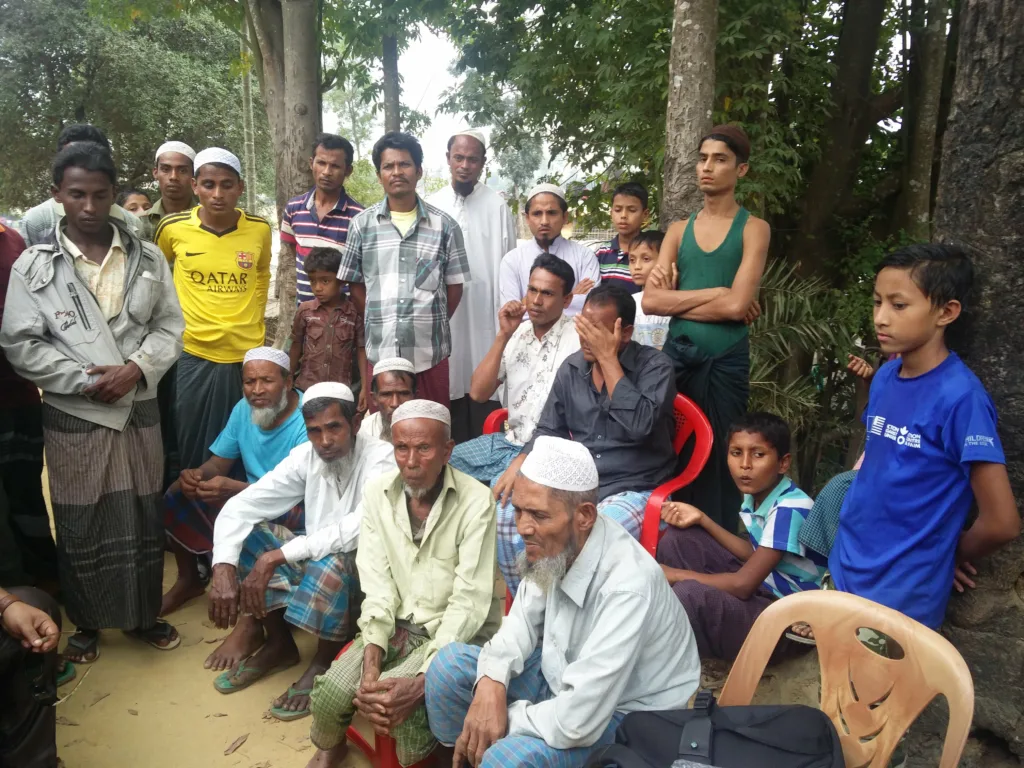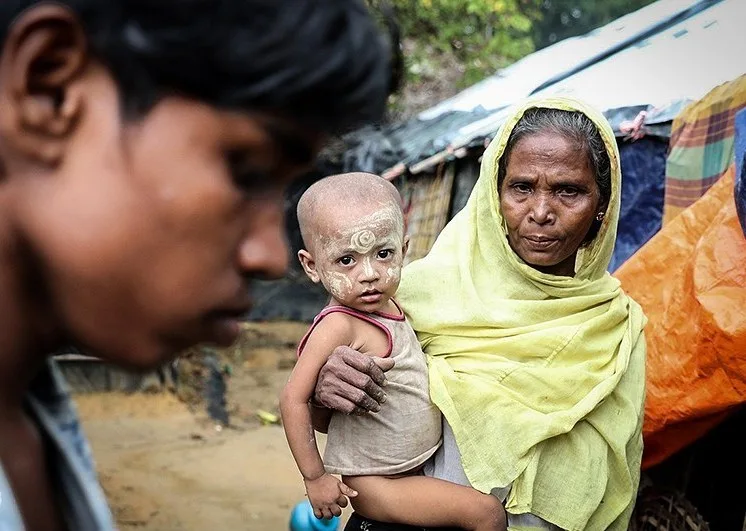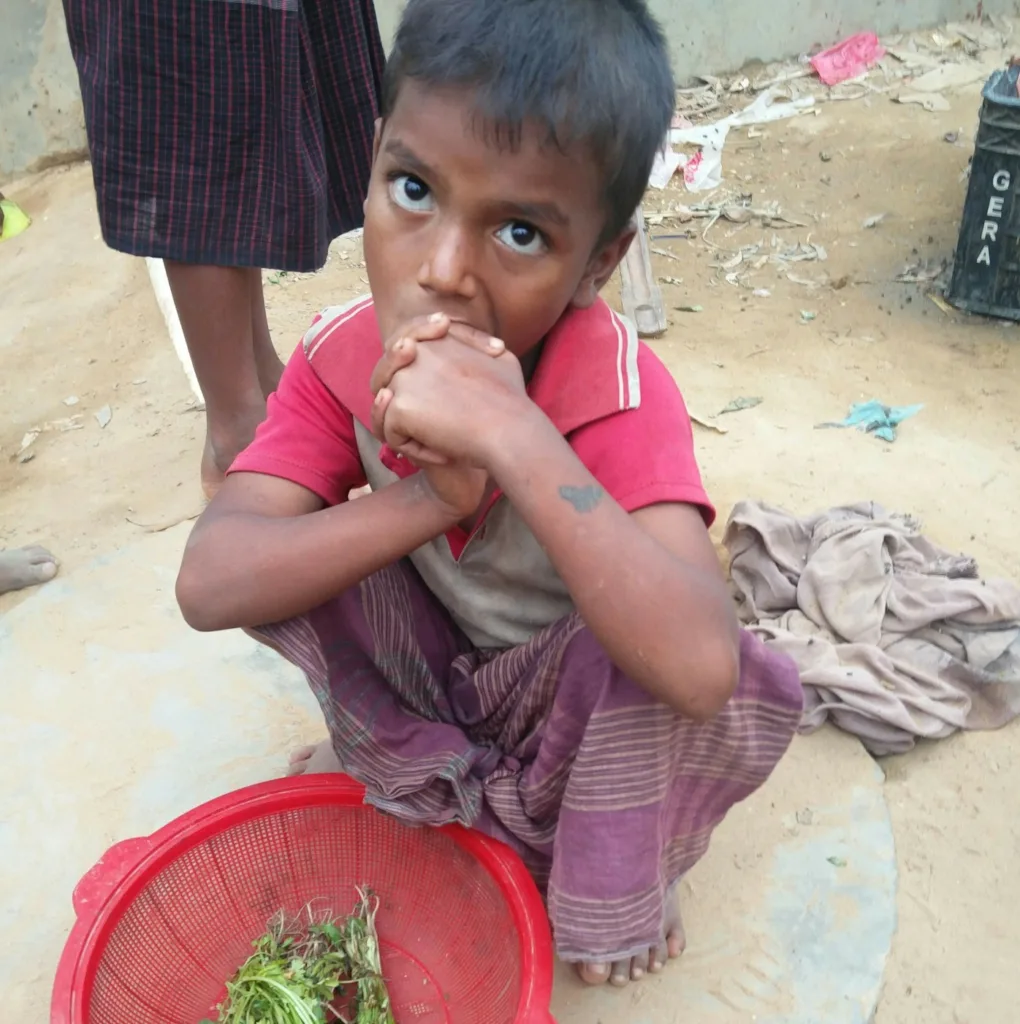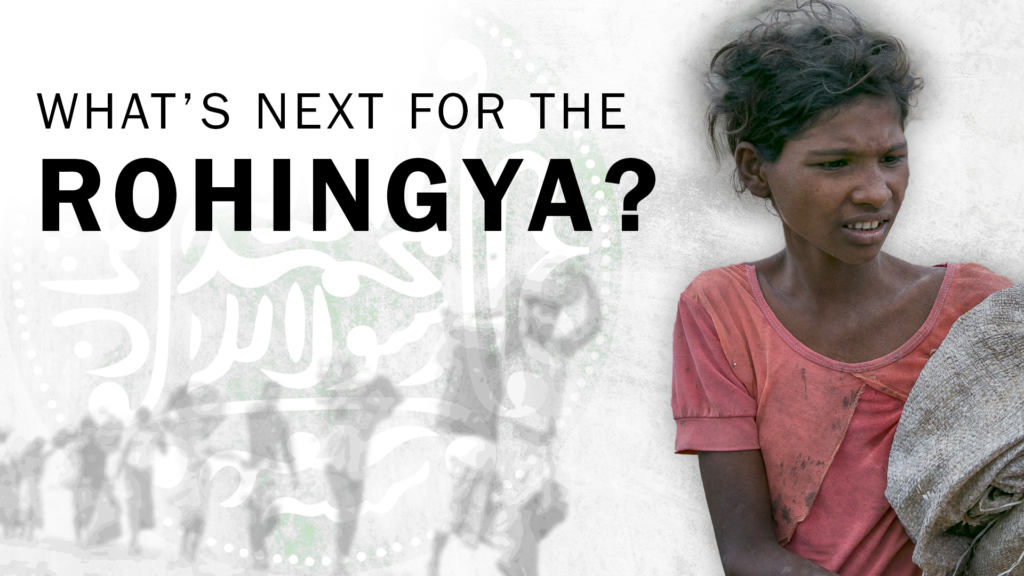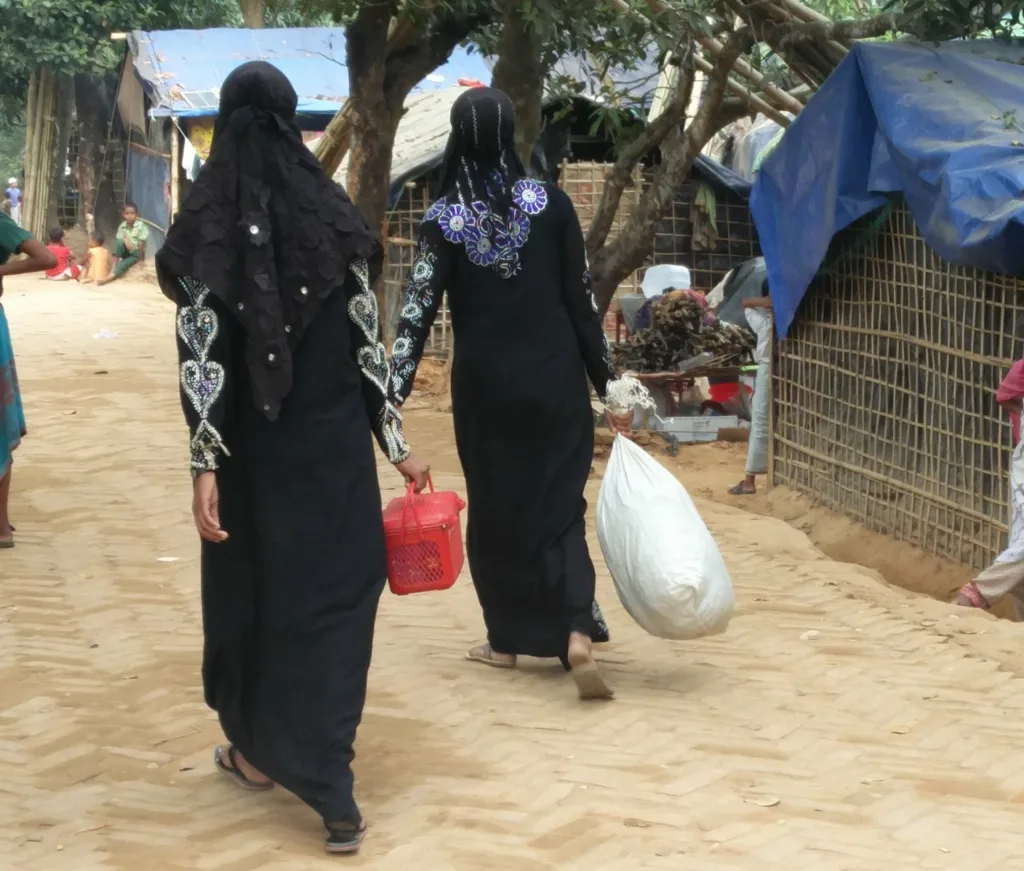2023 was the deadliest year of Rohingya boat journeys, with one in eight of those who fled perishing at sea
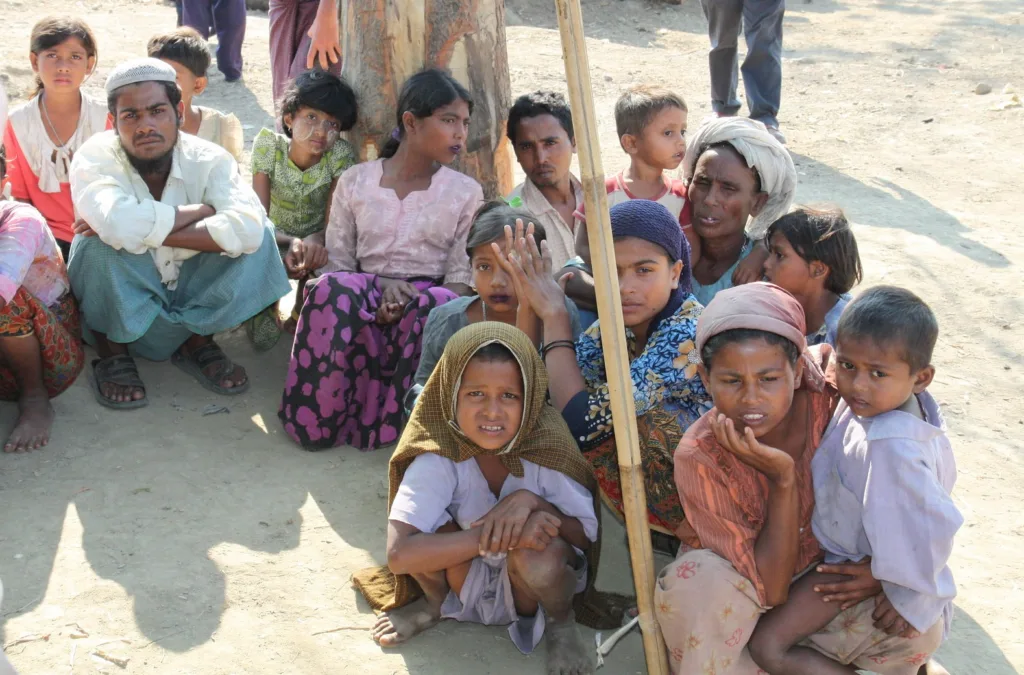 Rohingya refugees : Foreign, Commonwealth & Development Office of UK Government Open Licence
Rohingya refugees : Foreign, Commonwealth & Development Office of UK Government Open Licence
2023 was the deadliest year of Rohingya boat journeys, with one in eight of those who fled perishing at sea
“For these boat people, apparently, it was natural to be on the sea, untethered to any nation”.
–Kaamil Ahmed, I Feel No Peace
There is a long, shameful history of people fleeing warfare and persecution putting to sea and being turned away from safe havens.
The million or more Rohingya, who have fled Myanmar over the past decade seeking safety are just the latest.
Their perilous voyage across the seas, in rickety boats, is a direct fallout of their stateless condition: without a passport, faced with ethnic and military violence at home, and cramped, hopeless conditions in Bangladesh camps.
Their return to the seas in larger numbers is merely a continuation of decades old desperate attempts to find a dignified, viable, safe life.
Reports of cramped boats full of desperate men, women and children being abandoned at sea, turned back from neighbouring countries, or worse, are common.
Last year was considered the deadliest in the past nine years of Rohingya boat journeys, with one in eight of those who fled perishing at sea.
The plight of the Rohingya has echoes in the past.
In 1914, most of the passengers on board SS Komagata Maru, were denied entry into Canada, following the Canadian government’s racist policies directed at South Asian immigrants. Before the 1951 Refugee Convention, the passengers on board Komagata Maru could neither be designated as refugees, nor stateless.
However, their experience – being denied landing, asylum, shelter, often in contradiction to international laws and conventions – has found many parallels since then.
In 1975, at the end of the Vietnam War, thousands from southern Vietnam fled across the South China Sea in small fishing and rowing boats. They too were denied landing at many of their destinations.
A French journalist called this “a new Holocaust…looming, foretold and obvious to the whole world”.
The condition of the Rohingya has also been compared to the Holocaust, with Myanmar accused of violating the Genocide convention as far back as 2019.
Since 2015, the Rohingya, ethnic Muslim residents of the Arakan (formerly Rakhine) province of Myanmar (formerly Burma), have repeatedly found themselves in the same predicament as those on board the Komagata Maru and the ‘boat people’ of Vietnam.
Close to a million Rohingya, rendered stateless by Myanmar’s citizenship rules, fled to Bangladesh after concerted attacks in the Arakan. Many thousands travelled on boats headed across the high seas for safe harbour in neighbouring countries such as Thailand, Indonesia and Malaysia.
Often, these cramped refugee boats were abandoned mid-sea by human traffickers, while the destination nation refused them entry.
The discovery of shallow unmarked mass graves on both sides of the Thailand – Malaysia border, as well as abandoned jungle camps where refugees were kept confined for extortion, eventually led to a regional consultation.
This resulted in Indonesia and Malaysia agreeing to let the Rohingya disembark and gain temporary shelter while Thailand agreed to deploy navy vessels to assist.
Help also came from other unlikely quarters, such as the Aceh fishermen who steered boats to the shore and helped the travellers despite clear instructions from their governments forbidding them to do so.
The Rohingya have witnessed mounting atrocities at home and increasing hostility in the neighbourhood.
More than one million UNHCR registered refugees reside in various camps in Bangladesh. The number of people escaping Bangladesh and Myanmar with the aid of traffickers has also been on the rise.
In what is considered the deadliest year of Rohingya boat journeys, in 2023 more than 4,500 Rohingya attempted to cross the Andaman Sea and the Bay of Bengal. One in eight who tried to escape, perished.
The composition of the passengers on the boats has also changed. Instead of just single males, now families including women and children undertake the dangerous voyage together.
Children comprise one third of the total passengers. Women and girls are routinely subjected to sexual violence by traffickers, crew members of the boats and in the camps where they eventually end up.
They are often provided with emergency contraceptives and abortion pills after being subjected to abuse. Unlike in the second half of 2015, Indonesia and Malaysia now push boats back out into the sea, while local communities have turned hostile, storming refugee shelters.
The Rohingyas are also kidnapped with ransom demands from their families. At other times, family members who had earlier made the journey, pay traffickers to bring the rest of the family over.
Traffickers have been reported to have stalled the journey mid-sea, demanding more money from relatives in the camps in Bangladesh.
However, researchers claim that arresting traffickers will not bring about a lasting solution to the issue and the sea voyage may remain inseparable from the plight of the stateless Rohingya.
The journey from Myanmar and Bangladesh to southeast Asia is not the only perilous boat journey undertaken by the Rohingya.
Jaivet Ealom (author of Escape from Manus) chronicled his 2013 voyages to Darwin and Christmas Island, from Indonesia. Ealom, now settled in Canada, almost drowned with other passengers en route to Darwin, but chose to set out for Christmas Island immediately afterwards, after escaping the Indonesian authorities.
He writes, “If you go on a boat and die, at least it will be quick–one moment of pain and then it’s over. But if you stay here, the pain is bottomless”.
Three years before Ealom, Habiburahman (author of First, They Erased Our Name) recounts reciting his final prayers while passengers on the boat stubbornly tried to bail out water from the hull in a desperate attempt to stay afloat.
He was also going to Christmas Island, to seek asylum in Australia.
While between 2008 and 2023, Australia had granted only 470 visas to Rohingyas, commentators consider Australia to have become the “next destination for Rohingya refugees”, as they run out of places to go.
Adrift and stranded are two words repeatedly used to describe the situation of the Rohingya.
The two adjectives also serve as metaphors for their life.
Stranded in Myanmar, their home for generations where they are at the mercy of a brutal military junta or in Bangladesh in cramped, disease and poverty ridden camps. Or else adrift, in a foreign land or at sea, preyed upon by human traffickers, hostile navies and host communities.
The sea, which promises freedom, also becomes the site of their burial.
Samata Biswas is an Asst. Professor at The Sanskrit College and University, Kolkata.
This article is part of a Special Report on the Rohingya refugees produced in collaboration with the Calcutta Research Group and the Asian Broadcasting Union.
Originally published under Creative Commons by 360info™.



